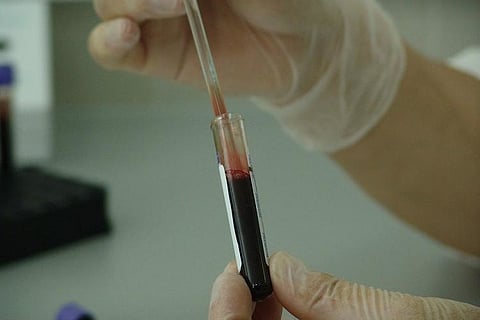

Yesterday marked World Haemophilia Day, an opportunity to raise awareness of the condition and its largely hidden footprint in India. For India’s many haemophiliacs, suffering is often in silence.
Haemophilia is a genetic condition which means sufferers do not have enough clotting factor. This refers to a group of proteins in the blood which works together to stop bleeding when a blood vessel is damaged. As a result, haemophiliacs’ ability to form blood clots is impaired, meaning they are prone to bleeding for a longer period of time after injury or surgery and bruising easily.
Haemophiliacs may also bleed spontaneously and suffer from deep internal bleeding. This can lead to damage to the muscles, joints, organs and tissues – risking long-term, debilitating consequences and even death.
In 2017, 196,706 people were diagnosed with haemophilia. Concerningly, in India, the true impact of the disease may not be fully understood.
India is home to the second highest number of haemophilia patients in the world, but as many as eighty percent of cases may not be diagnosed. According to Dr Ruby Reshi, head of the pathology department at the Government Medical College Srinagar in Jammu and Kashmir, just 20,000 haemophilia cases are registered in India. However, Dr Reshi says that “the total number of people with the genetic disorder is not less than 200,000.”
Lack of access to diagnostics may be key to the hidden haemophilia burden in India. In particular, shortfalls in rural healthcare may be playing a significant role.
“Currently the only challenge is about screening which has a huge gap in the rural parts of India,” stated Dr Rajesh Kashyap, an associate professor in the haemtology department of the Sanjay Gandhi Postgraduate Institute of Medical Sciences in Lucknow, Uttar Pradesh. He notes that two of the genetic tests for haemophilia which can detect clotting factor deficiencies are not expensive and can be administered at the district level.
The accessibility struggle for India’s haemophiliacs extends beyond diagnostics. Availing treatment is made difficult in many parts of India owing to irregularities in the supply chain of necessary medications needed for clotting factor replacement therapy in public facilities.
These can be costly if patients are forced to turn to the private sector, as a Times of India report spotlighting the plight of haemophiliacs in Andhra Pradesh state capital Visakhapatnam shows.
According to Dr V. Chandrasekharam, President of the city’s chapter of the Haemophilia Society of India (HSI), factor replacement therapy can cost between Rs 20,000 and Rs 30,000 for just two doses per day. Some haemophiliacs may require more, depending on how severe their condition is.
There is a need for expanded access to treatment and diagnostics in India, with the struggle for haemophilia diagnosis providing yet another example of how public health efforts are impeded by poor infrastructure.
“Until the diagnostic net is expanded neither haemophilia nor gravity of the problem can be known,” notes Dr Kashyap. Making sure patients are aware of the potential severity of the condition and can avail treatment when it is needed will be a core part of efforts going forward so that India can properly manage its haemophilia burden.
This article was originally published on Health Issues India. It is reprinted here with permission.